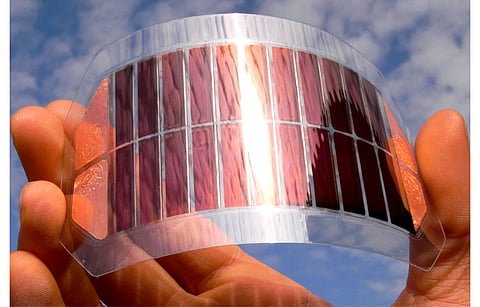

Using 'novel electrical and optical enhancement approaches,' a team of researchers from 3 leading institutes have reported significant improvement in perovskite and copper indium selenium (CuInSe2 or CIS) thin film tandem solar cell efficiency.
The tandem cell efficiency of 29.9% was reported by Swiss Federal Laboratories for Materials Science and Technology (Empa), National University of Singapore (NUS) and Germany's Helmholtz Institute Erlangen-Nürnberg for Renewable Energy (HI ERN) in a joint research.
Researchers explain that they achieved 20.2% 'record' efficiency for a semi-transparent perovskite cell and 81.5% average newer-infrared transmittance, using methyldiammonium diiodide and adjusting the optical interference spectrum.
When paired with a CIS bottom cell, the team was able to achieve tandem efficiency of 29.9%. They stacked the top perovskite cell and the CIS bottom cell mechanically, saying this makes them electrically independent. This allows for greater design flexibility as, the team explains, there is no need for recombination junction and current matching.
Even at the manufacturing level, this works better as it keeps the process simple and requires minimal upgradation of the current production line, thereby reducing capital costs. The process also ensures faster market entry for the technology, they add.
According to their techno-economic studies, the researchers believe these tandems could deliver close to 2,000 Wh/m2 daily for certain locations. Within ±30° latitude, these could generate electricity at competitive electricity costs, ranging from $0.03/kWh to $0.05/kWh.
Thin-film tandems with higher efficiency are expected to work well for high-value applications such as building-integrated PV (BIPV), vehicular integration, agrivoltaics and the like where lightweight and flexible structures are preferred.
Their research work has been published in the scientific journal Joule.
Recently, one of the world's largest solar PV manufacturers, China's LONGi, announced a world record 33.9% efficiency for crystalline silicon-perovskite tandem cell, beating the previous record of 33.7% held by Saudi Arabia's KAUST (see LONGi Announces Impressive Tandem Solar Cell World Record).
.png?w=50&fm=png)